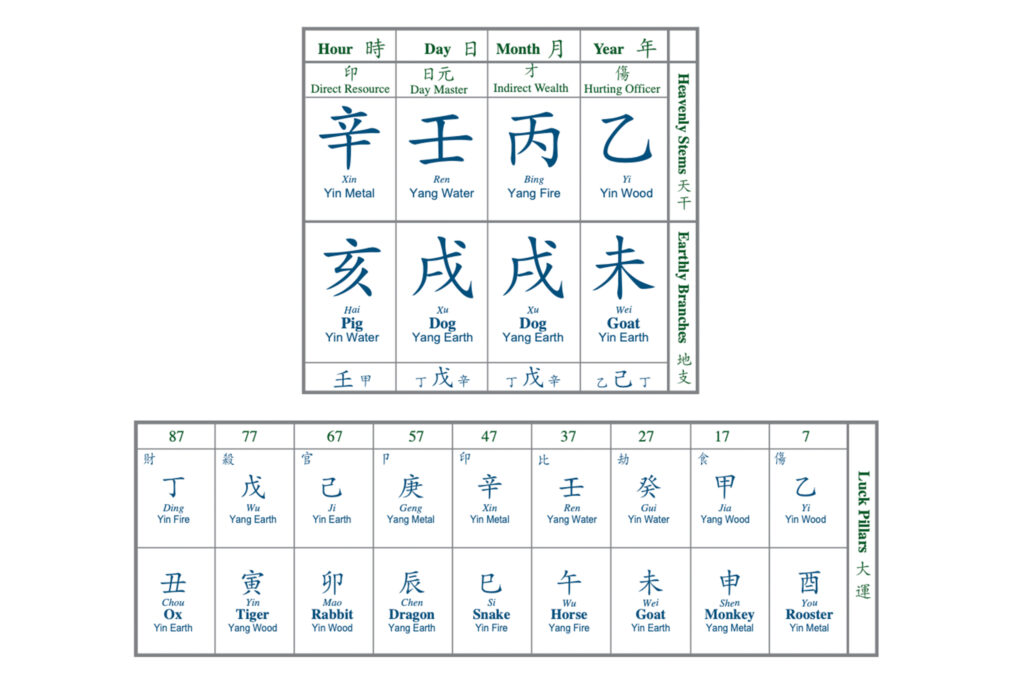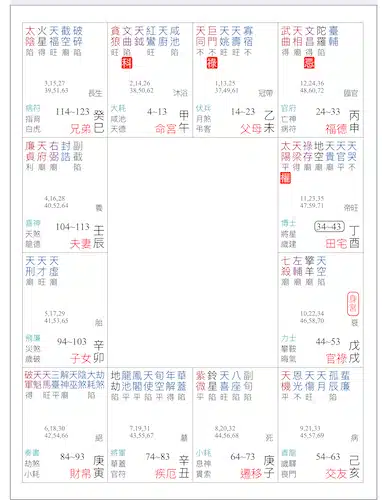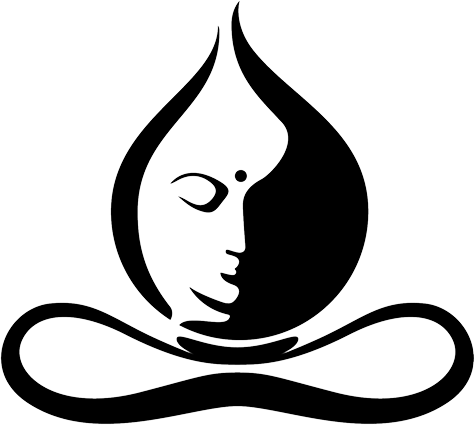What is BaZi?
A BaZi Chart
BaZi (八字), meaning “Eight Characters,” is one of the most well-known Chinese fortune-telling methods, with origins dating back to the Tang Dynasty (8th century) or even earlier during the Han Dynasty. The name comes from the eight characters that form a person’s natal chart, which represent the yin, yang, and five elements (Wood, Fire, Earth, Metal, Water) based on the birth year, month, day, and time.
The chart is divided into four pillars, each containing two characters, symbolizing how cosmic energy influences a person’s character, nature, and destiny. BaZi’s simplicity and ease of use have made it popular not just in China but also in neighboring cultures like Japan and Korea, where it’s known as Saju. Its accessibility and wide applicability have helped it become the most widely practiced Chinese metaphysical system today.

What Is Zi Wei Dou Shu?
Unlike BaZi, Zi Wei Dou Shu was initially exclusive to emperors, created as a form of Imperial Astrology. It was kept secret until the early 20th century when the Chinese empire fell. While all Chinese metaphysical practices stem from the ancient I Ching (The Book of Changes), Zi Wei Dou Shu developed into a more sophisticated and detailed system, especially during the Ming Dynasty (14th–17th centuries).
Zi Wei Dou Shu combines elements of Taoism, yin-yang theory, Traditional Chinese Medicine, and Feng Shui. It explores the interactions between humans, time, and space through both tabular and graphical methods, offering a highly detailed perspective on destiny. Known for its ability to uncover specific details about events, relationships, and timing, Zi Wei Dou Shu continues to be one of the most accurate and powerful tools in Chinese metaphysics.

BaZi vs. Zi Wei Dou Shu: Key Differences
- Accessibility vs. Depth
BaZi provides a broad, overarching view of life, offering quick insights into personality, strengths, weaknesses, and life cycles. It’s easy to learn and understand, but its abstract nature can make it harder to identify specific details.
Zi Wei Dou Shu, while more complex to master, delivers a detailed, micro-level perspective on life’s events. It excels at answering precise questions about the “who, what, when, where, and why.” - Origins and Applications
BaZi was designed for the general population and became widely popular due to its practicality and ease of use.
In contrast, Zi Wei Dou Shu was originally developed for imperial purposes, focusing on in-depth life analysis and aiding strategic decision-making - Chart Complexity
A BaZi chart consists of eight characters and their interactions with the five elements, offering a straightforward structure. In contrast, a Zi Wei Dou Shu chart involves 12 palaces (such as Career, Relationships, Wealth, Health etc.) and over 100 stars, creating a much more complex system with nearly 260,000 possible permutations.
Which is Better?
The choice between BaZi and Zi Wei Dou Shu depends on your goals. Both systems are grounded in Chinese metaphysical wisdom and provide accurate insights. BaZi excels in offering a broad, big-picture perspective on life and energy cycles, making it ideal for general guidance. On the other hand, Zi Wei Dou Shu is better suited for those seeking detailed answers and a deeper exploration of their destiny’s nuances.
Ultimately, the skill and experience of the practitioner are crucial. While many practitioners are knowledgeable in both systems, true mastery comes from the ability to analyze and interpret clearly, no matter the system.
A Matter of “Yuan-Fen”
In Chinese, 緣分 (yuan-fen) refers to fateful encounters or meaningful connections. Finding a skilled, insightful practitioner, whether in BaZi or Zi Wei Dou Shu, is a matter of yuan-fen. When you meet one who truly resonates with you, trust the journey they guide you on—it may be the key to unlocking your destiny.




